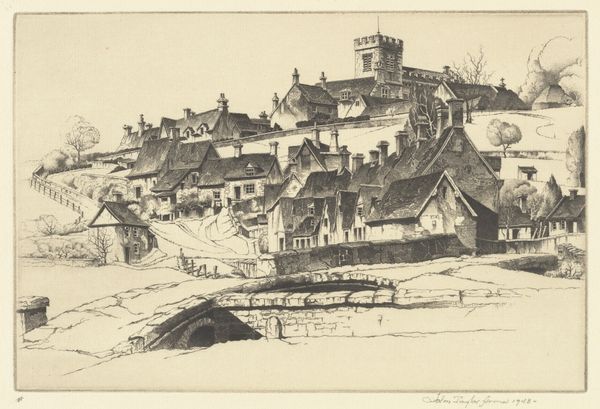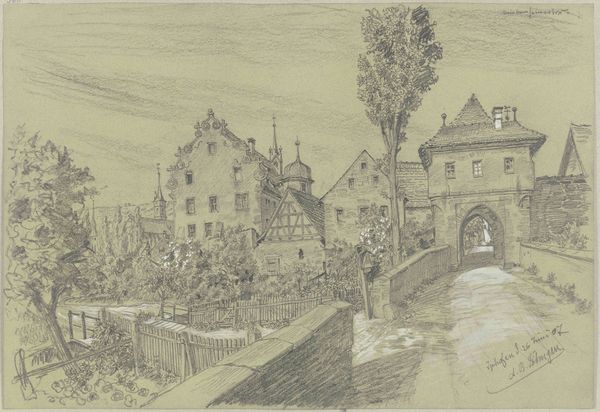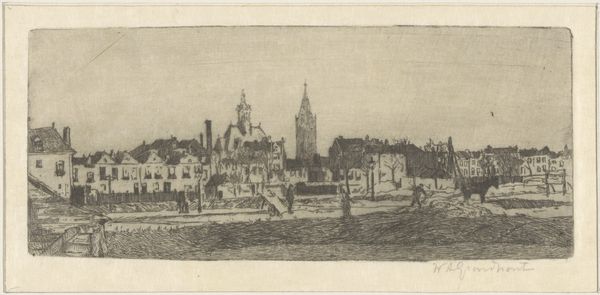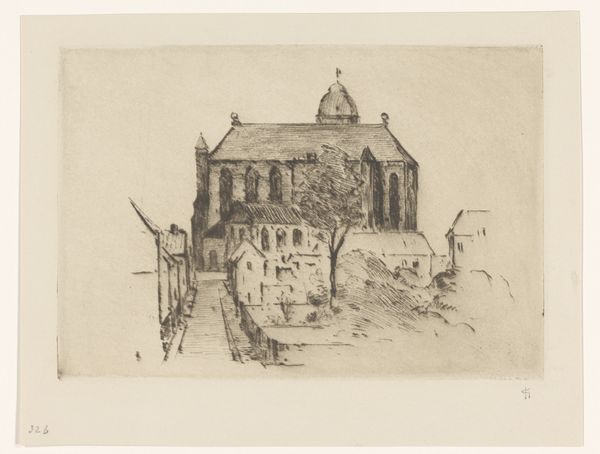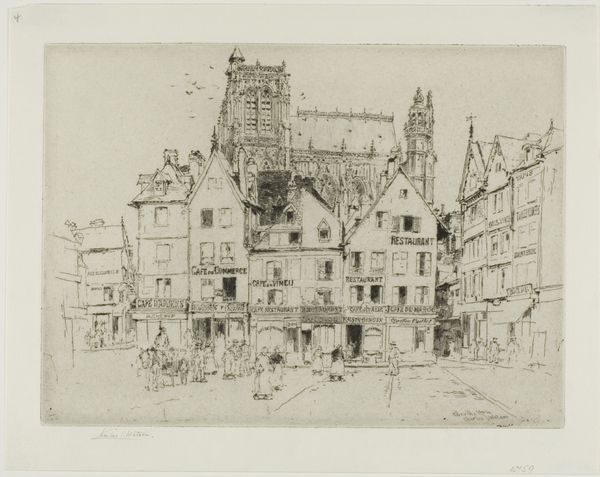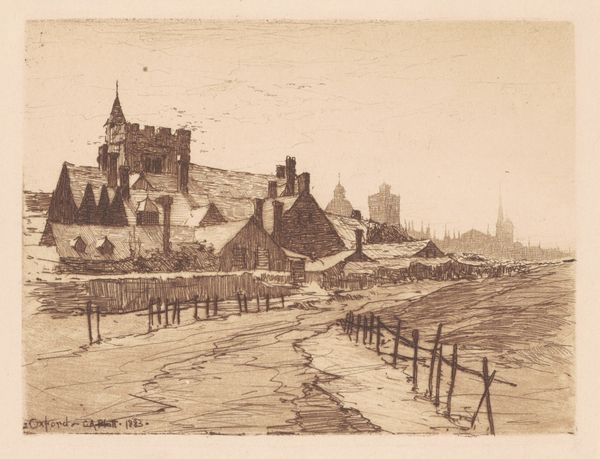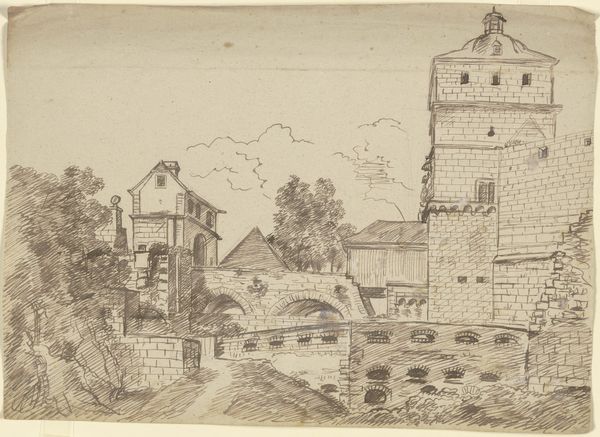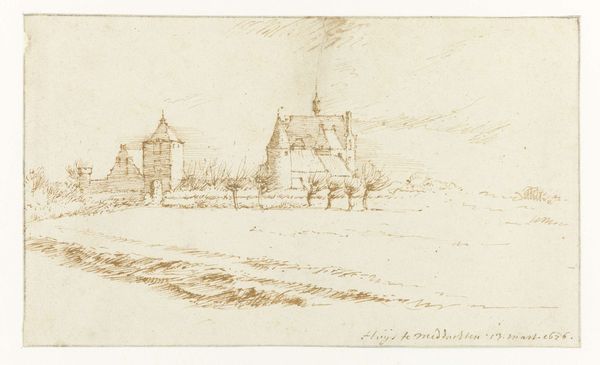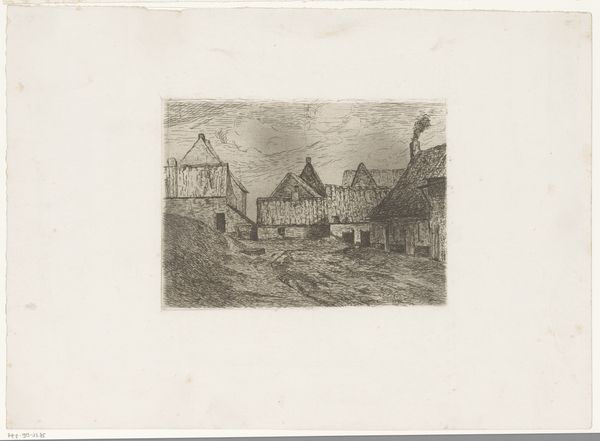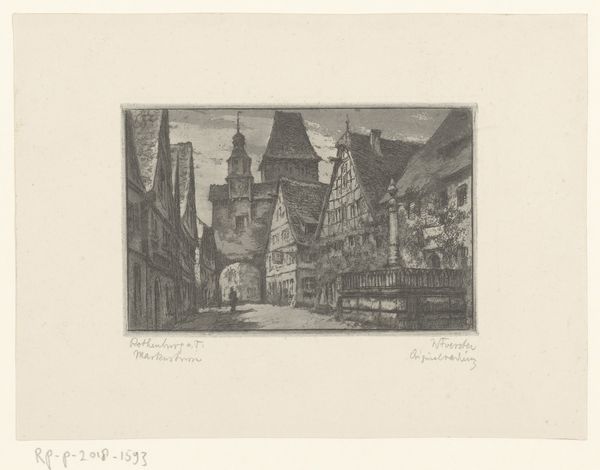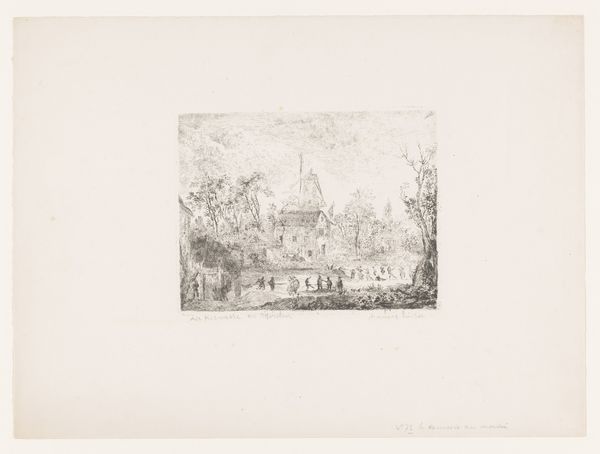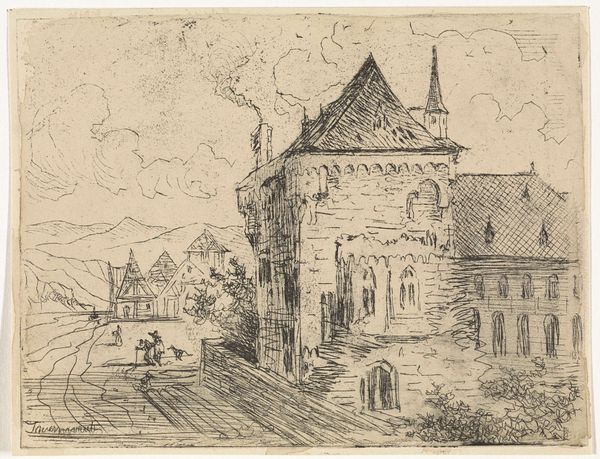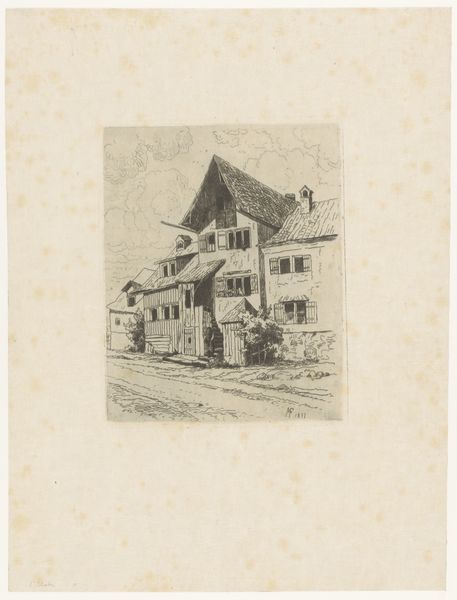
Gezicht op Pontoise, met centraal de Cathédrale Saint-Maclou 1867 - 1914
0:00
0:00
print, etching
# print
#
impressionism
#
etching
#
landscape
#
etching
#
cityscape
Dimensions: height 120 mm, width 198 mm
Copyright: Rijks Museum: Open Domain
Maurits van der Valk created this print of Pontoise, with its cathedral, using etching, sometime between 1870 and 1935. Etching involves coating a metal plate with a waxy, acid-resistant substance called a ground. The artist then scratches an image into the ground, exposing the metal. When the plate is immersed in acid, the exposed lines are eaten away, creating recessed marks. Ink is then applied to the plate, filling these lines. Finally, the surface is wiped clean, and the image is transferred to paper under high pressure. Van der Valk's expressive, scratchy lines capture the architectural details, and the daily life of Pontoise. The deliberate manipulation of the etching process—controlling the depth and texture of the lines—imparts a handmade quality to the print. The finished artwork has a direct connection to the artist's hand and eye, and is a reminder that even reproducible media like printmaking rely on skillful labor. By understanding the processes behind this image, we can appreciate the artist's craft, and the rich layers of meaning it conveys.
Comments
No comments
Be the first to comment and join the conversation on the ultimate creative platform.
